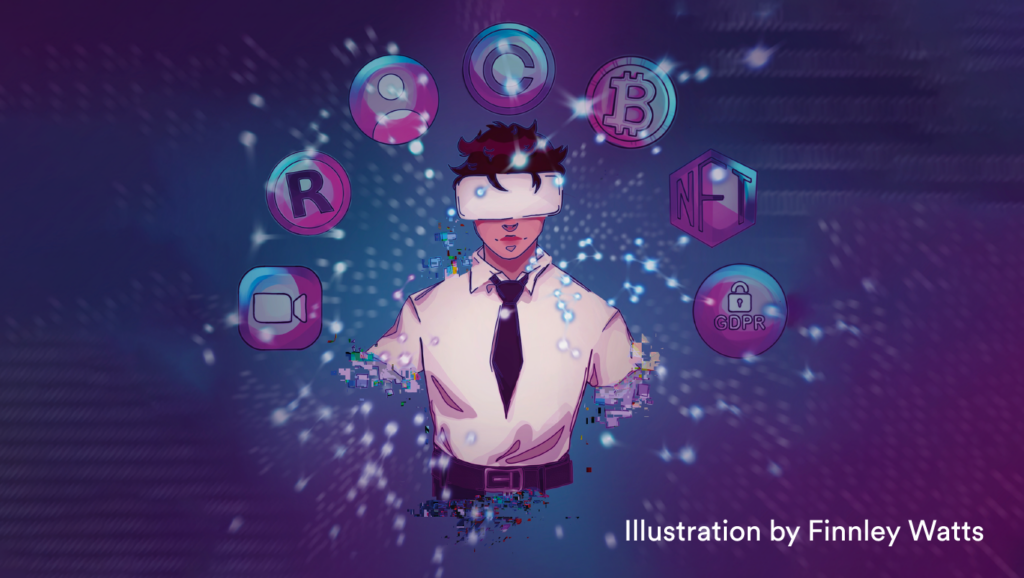Welcome to the metaverse: part two
Past, present and future
21.09.2022

In this second article (you can find the first article, which covers definitions for a digital world, here) we will explore initial iterations of the metaverse (“metaverse-like” platforms), the metaverse platforms currently in use or under development, and consider what the metaverse will look like in the future.
The past
Although the concept of the metaverse as a realistic proposition is relatively new, the building blocks for its conception have existed for some time, particularly in gaming. Avatars moving through immersive worlds were popular in the role-playing games (“RPGs”) of the 1980s, and over time these worlds have become increasingly immersive by harnessing improvements in technology, culminating in sophisticated 3D games played by users around the world such as World of Warcraft.
The line between gaming and living was further blurred in Linden Labs’ Second Life, released in 2003, in which players create an avatar to live on an online platform. Rather than being a game, it is a place for people to spend time and socialise, with amenities such as universities, nightclubs and even churches, as well as its own currency.
Other games that avoid linear gameplay and encourage use of an immersive environment include Minecraft and Roblox. Roblox in particular is avatar led, with an active marketplace for digital assets such as new costumes, pets and houses to improve your avatar’s life. It also mimics the vision of the metaverse presented in the novel Ready Player One, in which various game worlds can be entered from a central street. Even Fortnite, which started out as a fairly simple battle royale style game, has expanded into a pop culture platform hosting live music concerts. Many of the above games have also begun to incorporate elements of XR, although perhaps the most famous use of XR to date (other than the YouTube phenomenon of VR-wearing grandparents jumping into televisions), is the incredibly popular AR game Pokemon Go.
The present
Many of the games mentioned above are still popular and will no doubt have a role to play in the metaverse of the future, but there are also platforms being offered specifically with the metaverse in mind. The most famous example is Meta’s (formerly Facebook) Horizon platform, which consists of Horizon Worlds, a VR social networking and gaming platform. Similar to Roblox, there is a central street, known as the Plaza, from which users can access various gaming and creative worlds.
Meta isn’t the only Big Tech player to enter the metaverse market. Microsoft announced plans to launch its own metaverse platform, called Mesh, in 2021. Although Microsoft has expertise in gaming, (they have owned Minecraft since 2014 and recently acquired World of Warcraft), its foothold in providing enterprise software is likely to provide a different aspect to its metaverse. It’s perhaps no surprise that Microsoft’s first Mesh product is a VR add-on to Teams, a business communication tool.
There are alternatives to the Big Tech owned metaverse platforms. Decentraland and The Sandbox use blockchain technology to create virtual worlds consisting of various parcels of NFTs (known as LAND) that can be bought using their own cryptocurrency. Both platforms claim to be decentralised and owned by their users, and are often cited as examples of Web3. Decentraland is even governed through a DAO, which allows users to vote on strategic matters based on the LAND and in-game cryptocurrency they own.
The future
Looking to the metaverses of the future, there seem to be a few different criteria on which platforms will judge their success. One of these criteria is the degree of immersion in the virtual world – for example Meta CEO Mark Zuckerberg’s visions for the metaverse is for it to be a 3D version of the internet that can “deliver a deep feeling of presence”. Successfully fulfilling this criteria will likely depend on the ability of the technology underpinning the metaverse to give virtual environments sights, smells and sounds to mimic or enhance real world environments.
Another criteria is the capability of the metaverse to operate as a means of performing many aspects of human life, as opposed to “just” being a gaming platform. The metaverse-like platforms of the past show that games can become social networks, and, in some instances, even become platforms for education and work. Will the metaverse be able to encourage different use cases and thereby attract a user base as broad as the internet, or, will current, simpler use cases (such as dressing avatars in increasingly elaborate NFTs) be sufficient to increase the number of users?
A final criterion to consider is interoperability. If the creation of the metaverse lies in the hands of various Big Tech companies, as opposed to being a broader public-private project like the internet, it may not achieve the interoperability needed to allow seamless movement between various metaverses. If different hardware is needed to access various metaverses (as is the case today), then the metaverse is unlikely to be as accessible as the internet. It will be interesting to see the value metaverse platforms attach to interoperability and whether they can coordinate to create a single metaverse.
In summary, for a supposedly new technology the metaverse has a rich past. Unsurprisingly, that past and its present, involves many of the legal issues we will explore in this series, such as data privacy concerns, online harms and IP infringement. The metaverse has an ambitious future, so we’ll also address some of the new legal issues that could arise as a result of the technologies used to form the metaverse, such as NFTs and cryptocurrency.
Still have questions? Be sure to read our metaverse articles below:
- Welcome to the metaverse: part one (definitions for a digital world)
- NFTs in the metaverse
- Brand protection in the metaverse
- Advertising in the metaverse
- Copyright in the metaverse
- Taxation in the metaverse
- Competition/antitrust in the metaverse
- Jurisdiction and torts in the metaverse
- Reputation in the metaverse
- Online harms and safety in the metaverse
- Data protection in the metaverse
- Working in the metaverse – what employers need to know
Bristows Tech Summit 2022What should innovative technology companies be looking out for over the next year? Our team of leading experts tackle the most important legal and commercial issues facing the technology industry. |

Charles Purdie
Author
